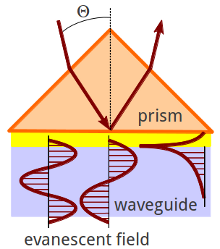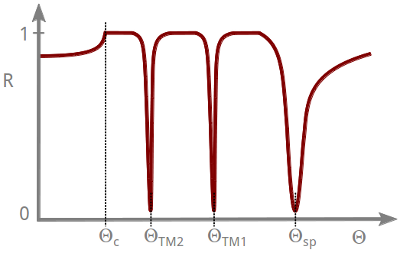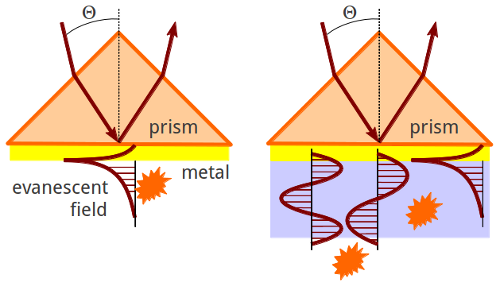Theory - Links
Confocal vs evanescent
Principles of evanescent illumination
Surface plasmons
Label-free detection
Surface plasmon fluorescence spectroscopy
Optical waveguide spectroscopy
Optical waveguide (fluorescence) spectroscopy
 Excitation of waveguide modes and principles of optical waveguide fluorescence spectroscopy.
Excitation of waveguide modes and principles of optical waveguide fluorescence spectroscopy.
Optical waveguide (field-enhanced) fluorescence spectroscopy (OWFS) is a technique similar to SPFS. If the thickness of a dielectric layer on a metal- (e.g., gold or silver) coated substrate is sufficiently large, optical waveguide modes are observed in addition to the surface plasmon resonance (when a substrate with a high refractive index is used).

By use of the different waveguide modes measured in reflectivity for p- (TM-) and s- (TE-) polarization, respectively, one can calculate/simulate various properties of the waveguide structure as well as extract key parameters of the guided modes, for example, the angular dependence of the optical fields as one sweeps through the various resonances, the field distribution within the waveguide structure, the optical intensity integrated for each mode across the slab waveguide, etc.
At the resonance angles of these modes, the guided electromagnetic wave, again, can be used to excite fluorophores in the thin film.

